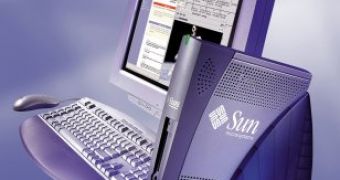Electricity was never cheap, yet the restrictions and regulations imposed as environmental measures make it much more expensive. Green computers cut the energy requirements, but there is more to be done in order to keep the electricity bill at a minimum.
Server manufacturer Sun Microsystems estimates increased customer interest in its Sun Ray thin desktop client, as energy prices go up. According to Subodh Bapat, vice president and chief engineer in the Eco Responsibility office at Sun, these thin clients take up less energy than average desktop computing systems, and they could go as low as 4 to 8 watts of power. The thin clients can work with such low amounts of energy because storage and computing resources are located on a remote server.
A single remote server can allocate resources for 10 to 50 thin desktop clients at once, but the figures depend on what type of applications the clients are using, as well as server's overall hardware resources. At the same time, a single regular desktop computer can eat up 100 to 150 watts of power. Desktop PC fans may claim that the comparison is unfair, given the fact that they have powerful CPUs and large disk drives, unlike the thin clients.
Electricity prices are continually increasing at a rate of 13 to 14 percent per year. If the price per kilowatt situated at 2 to 3 cents a kilowatt-hour in 2000, now it reaches 11 cents or even more. The electricity aspect was overlooked in the past, because it was not important. "In the past, people really haven't factored in power in TCO (total cost of ownership) calculations" Bapat said.
Thin clients also have a much greater lifespan than desktop computers, given the fact that their hardware resources never get outdated, as it uses the server's components. "You only have to replace it every 80 years. It is more eco-friendly than a PC," he said. "It doesn't get obsolete as fast." In comparison, traditional PCs get replaced every 5 years at most.
Sun tried to promote the use of thin clients for more than a decade. PCs however, got more and more successful because they were cheaper. Moreover, the first thin client models were limited in performance, and made it easier for PCs to become universally adopted.

 14 DAY TRIAL //
14 DAY TRIAL //